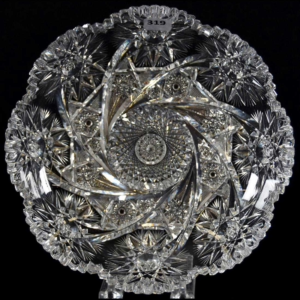Galena stone – properties, virtues & benefits
In lithotherapy, Galena stone is known for being both stabilizing and soothing, beneficial for body and mind. Its remarkable properties deserve to be explored more closely.
GALENE CHARACTERISTICS
- Chakra: Root (1st chakra).
- Properties: Protection, stability, grounding, emotional balance, energy purification.
- Astrology: Saturn.
- Zodiac: Capricorn.
- Elements: Earth.
- Colors: Gray, silver.
- Hardness: 2.5 to 3 on the Mohs scale.
- Chemical Formula: PbS (lead sulfide).
- Associated god: Hecate (Greek goddess of magic, sorcery and the night).
GALÈNE – HIS STORY
Galena stone is mined in several localities in the Calestienne region, which have become famous over the years. These include the towns of Matagne-La-Grande, Matagne-La-Petite, Treignes and Villers-en-Fagne. Early miners worked hard to extract this stone from the earth. 11 Tellin mine shafts were discovered by radio, and one of them is still visible today. Some places bear evocative names such as the Lead Hole or the Lead Pit, referring to quarries that are more or less accessible to the public. Galena stone was once called Saumont or Saumont wood, and was used to produce purified buckshot. The ancients used terms such as fosses, minières and plombières to describe these mines.
The term galena comes from the Greek and Latin for buckshot ore, already cited by Pliny the Elder in 77. Initially, the term encompassed most buckshot minerals and smelting slag, but today it refers solely to the natural formula of buckshot sulfide.
Ancient photos show the stone being extracted from the mines, and ancient writings mention its importance as the main source of buckshot for thousands of years. The exploitation of Laurium’s silver buckshot mines during antiquity contributed to Athens’ hegemony in the Mediterranean, thanks to the large quantities of silver they contained.
In ancient times, the buckshot extracted from Galena was used to facilitate its extraction. The Babylonians used it to make vases, while the Romans used it for water Pipes. The invention of printing greatly increased the demand for Galena to make alloys used in the manufacture of type.
GALENE STONE – ITS ORIGIN AND COMPOSITION
Galena is a mineral species that contains buckshot sulfide, as well as traces of various other elements such as bismuth, silver, copper, selenium, cadmium, tellurium, zinc, antimony, iron, arsenic, gold and molybdenum. As a result, there are several varieties of galena. It is often found in hydrothermal deposits, associated with high-temperature silicates in hypothermal deposits, with fluorite and barite in mesothermal parageneses, and with gray copper minerals and silver salts.
Galena crystallizes in the cubic system and generally occurs as cubes, 10 mm octahedra or tabular crystals. It can be massive, finely crystallized or even fibrous in rare cases. It is often found as fist-sized balls or blocks in deposits, and vein fillings in fissures can vary from a few millimeters to several meters.
Galena is often tarnished, but has a bright, metallic sheen on fresh breaks. It is easily oxidized and raPidly transforms into buckshot sulfate, which forms a protective layer on the surface to prevent significant alteration. It is unstable in contact with carbon dioxide and transforms into creamy cerussite. These minerals are important surface guides for prospectors and are decisive clues to the presence of the quarry.
Headshot deposits are varied and are often found in sedimentary deposits within tuffs that dominate volcanic flows. They can be associated with deposits of copper, calcite, pyrite, zinc, limestone and buckshot, as well as with more complex deposits comprising several minerals such as copper, tin, antimony, mercury, silver, gold, bismuth, molybdenum or tungsten. Some deposits are associated with plutonic bodies such as intrusive granites, which can emit hydrothermal veins within sedimentary rocks.
Mineralization is often accompanied by hydrothermal alteration in the host rocks, and the composition of metallic minerals can vary at depth due to segregation under pressure and temperature conditions. The production of buckshot is fluctuating due to its association with other minerals in deposits.
Worldwide, buckshot production is estimated at nearly 3.5 million tonnes a year in countries such as the USA, Australia, Canada and the USSR. Buckshot is considered a ubiquitous ore due to its ability to conform to a variety of geological environments.

GALENE STONE – VERTIES AND PROPERTIES
PHYSICAL GALENA
On an emotional level, galena stone is considered a pebble of moderation. It can help calm violent emotions, tantrums, the need for revenge and grudges. On an intellectual level, it can help maintain a clear course of action and ward off unnecessary thoughts or sources of suffering that could impede progress. It can also provide stability and a solid structure for achieving set goals.
When it comes to sPirituality, galena stone can be an excellent guide for moving forward in the dark. However, it’s important to note that it can also create a rather rigid corridor and freeze oPinions and knowledge when used for long periods in a sPiritual quest. It is therefore recommended to be attentive and to listen to oneself when working with this stone.
PHYSICAL GALENA
On a physical level, galena stone can be used for detoxification and dissolve deposits in joints. Even a small sample can help treat immobility, dizziness and promote hair regrowth. It can also help people with balance problems by being placed around the ears and base chakra.
Galena stone can also help reduce skin rashes and treat scalp problems. It is considered an anchoring stone that can help one to be more aware and present in the moment. It can be placed on the base chakra for this effect. For intellectual and musical balance, it is recommended to place it on the third eye.
In combination with dolomite, galena stone can create soothing, stabilizing energies. In combination with labradorite, it can help experience inner peace and musical insPiration. For increased protection and productivity at work, it is recommended to combine it with black tourmaline. You don’t need to have a whole collection of these stones at home to benefit.
Other stones and minerals such as Herkimer diamond, malachite azurite, green calcite, sphalerite, iolite, dumortierite, phenacite, dendritic agate or moss agate can also be combined with galena stone for soothing effects. However, it is important to note that galena stone contains traces of highly toxic products and should not be used to prepare an elixir. It’s also advisable to wash your hands with soap and water after each use, especially if you’re working with sphalerite.
Finally, it’s essential to keep the stone out of children’s reach, as it could be ingested.

GALENE STONE – CLEAN AND RECHARGE
The Galène can be cleaned and recharged as follows:
Cleaning:
- Distilled water: Place the stone under a stream of distilled water for a few minutes to purify it of accumulated negative energies.
- Fumigation: burn sage, palo santo or sandalwood and pass the stone through the smoke.
- Earth: Bury the stone in a bowl of earth overnight.
Loading:
- Solar light: Place the stone in the sun for a few hours to recharge it with energy.
- Moonlight: Place the stone in moonlight for one night to recharge.
- Crystals: place the stone on a cluster of rock crystal or amethyst for a few hours to recharge it with positive energy.
- Intentions: hold the stone in your hand and visualize a white light filling it with positive energy.
It is recommended to clean and recharge the stones regularly to enjoy their benefits.
WHERE DOES THE NAME GALEN COME FROM?
The name “galena” comes from the Greek word “galēnē” meaning “lead ore”. Galena is in fact a mineral composed of lead sulfide (PbS), which is an important source of metallic lead. The name was first used by the German naturalist Georgius Agricola in the 16th century to describe this mineral, which had already been known since antiquity for its metallurgical properties. Today, galena is mainly used as a lead ore, but it is also appreciated for its beauty and esoteric properties.
WHICH CHAKRA DOES GALENA ACT ON?
Galena is often associated with the root chakra (or 1st chakra). The root chakra is located at the base of the sPine and is associated with grounding, stability, security, survival and connection to the Earth. Galena is often used to help balance and harmonize the root chakra, bringing energy of grounding and stability. It can help boost self-confidence, improve concentration and promote a sense of security and protection.
WHICH ASTROLOGICAL SIGN IS ASSOCIATED WITH GALEN?
The astrological sign associated with galena is Capricorn. Capricorns are often considered serious, ambitious, hard-working and responsible. They often need a solid anchor to achieve their goals, and galena is considered a beneficial stone to help them find that anchor. It can also help Capricorns boost their self-confidence and develop their potential.
GALENE STONE SUMMARY
Gallene stone is a widespread mineral, also known as lead sulfide. Its chemical composition is PbS, which means it’s composed of lead (Pb) and sulfur (S). Galena stone is often associated with other minerals, such as sphalerite, chalcopyrite and pyrite. It has been used since antiquity for the production of lead, silver and other metals, as well as for the manufacture of crystals for radio and signal detection. Galena stone is also an important mineral for collectors and mineral enthusiasts due to its silvery color and unique crystal structure. However, handling galena stone can be dangerous due to the presence of lead, which is toxic to humans.

